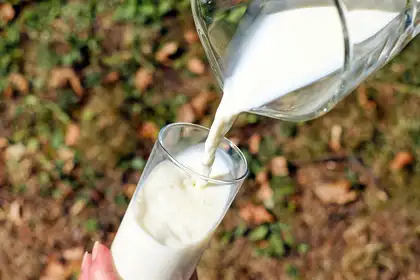
Alongside the Chinese Government’s encouragement for increasing milk consumption, an ageing population interested in maintaining bone and general health and a preference for imported milks, lingering distrust persists in local product due to the 2008 melamine scandal. This resulted in six infant deaths and numerous hospitalisations. In response, the New Zealand Government and dairy industry are seeking comprehensive insights into the consumption patterns within the vast Chinese market.
Since milk is not traditionally a part of Chinese diet, consumption habits, particularly among older adults, may differ from what is typical for most Westerners. Understanding them is crucial, not only for the development of new products but also for their successful launch, particularly in international markets, and to effectively compete in crowded retail environments.
Fonterra-Riddet Chair of Consumer and Sensory Science at Te Kunenga ki Pūrehuroa Massey University Professor Joanne Hort specialises in analysing consumer responses to food and drink and how this affects purchasing decisions. Professor Hort leads the Food Experience and Sensory Testing (Feast) laboratory on the Manawatū campus and designed and commissioned this research.
The study surveyed 1000 Chinese milk consumers aged between 45 and 75 residing in the mega-cities of Beijing, Shanghai, and Guangzhou, with two smaller provincial cities: Chengdu (southwest) and Shenyang (northeast). The focus was on older adults, a fast-growing population in China.
Dr Ao Chen was responsible for the research project and says he was surprised at the differences between milk consumption habits in New Zealand and China.
He says most dairy milk in China is consumed by city-dwellers.
“Consuming dairy requires a changed mindset, and new ideas and exotic foods and drinks tend to be adopted first in the big cities where people are more open-minded and affluent. Nearly half of the consumers buy UHT (Ultra High Temperature) milks because of the distance from the main milk producers, primarily situated in Inner Mongolia, and the cost of cold chain distribution. UHT is distinctly preferred by consumers in Chengdu and Shenyang (73 per cent and 78 per cent respectively), whereas powdered milk is favoured in Guangzhou. Fresh pasteurised milk consumption in China is not very common but in recent years, its popularity has been increasing, especially in Beijing and Shanghai according to our study.”
He says most participants drink their milk straight as part of their breakfast routine at home.
“In the big cities, they often pair it with more exotic Western-style breads and cereals and sometimes make other beverages with the milk. In the smaller cities, they tend to consume milk with more traditional breakfast foods such as steamed buns. In cold northeast Shenyang, they often skip breakfast during the short daylight hours of winter and drink their milk at night. Except for preparing doughs, milk is seldom used as an ingredient in cooking.”
Butter and cheese consumption is negligible, though yoghurt is becoming popular, he adds.
“The Chinese are not yet addicted to lattes and flat whites and are not in the habit of adding milk to tea. However, milk is added to bubble tea which is increasingly popular with the younger generation. The Chinese don’t particularly relish the taste of milk on its own, so about one in 10 will add sugar or honey. It’s the nutrition and health benefits of milk driving consumption.”
The detailed results of the survey were recently published in the Journal of Dairy Science and are available here.
Why the Chinese Government is urging people to drink more milk
Official dietary guidelines have raised the recommended intake of liquid milk equivalent per day from 300g in 2016 to between 300g and 500g (roughly equivalent to half a litre) in 2022. China has taken note of Japan’s notable increase in average height following the introduction of dairy milk consumption, which began with a national school lunch programme following the Second World War.
While some Western consumers are switching to alternative plant milks, China is moving in the opposite direction.
Despite a dramatic rise in dairy milk consumption since the end of the Second World War, China’s per capita consumption remains only a third of the global average, and a tenth of the world’s top milk consumer, Finland.
Local dairy production has seen significant growth, from 1.2 million tonnes in 1980 to 37.8 million tonnes in 2021, but there is a shortfall of about 30 per cent between what they produce and what they consume. China is still the largest importer of dairy products, with most items sold in shelf-stable formats, including UHT milk, ambient yoghurt and milk powders, due to a historical lack of cold chain distribution and fridges at home.
Uneven economic growth has resulted in uneven market expansion across different regions, resulting in varying milk consumption patterns across the country.
More about Feast
The Food Experience and Sensory Testing laboratory at Te Kunenga ki Pūrehuroa Massey University in Palmerston North is equipped with an array of equipment used to discern the intricate nuances of local consumer preferences. This includes investigating how taste is influenced by various factors such as smell, colour, texture, sound, salt and sugar content, acidity, packaging, product preconceptions, nutritional claims, attitudes to food origins and sustainability, surroundings, social context, temperature and affordability.
Related news
New project to help better understand food consumers
The Food Experience and Sensory Testing laboratory on Massey’s Manawatū campus has been awarded $1 million by Fonterra for a three-year project investigating better methods to predict consumer responses to food products.

Clinical trial finds deer milk improves muscle mass and physical performance
A ground-breaking clinical trial has found regularly consuming Pāmu Deer Milk improves the nutritional status, muscle mass and physical performance of women aged 65 and above.

Food tech grad making a career out of milk
Food technologist Zara Beckingsale, Ngāpuhi, Tūhoe, picked her career out of a book, despite never having heard of the job before.
